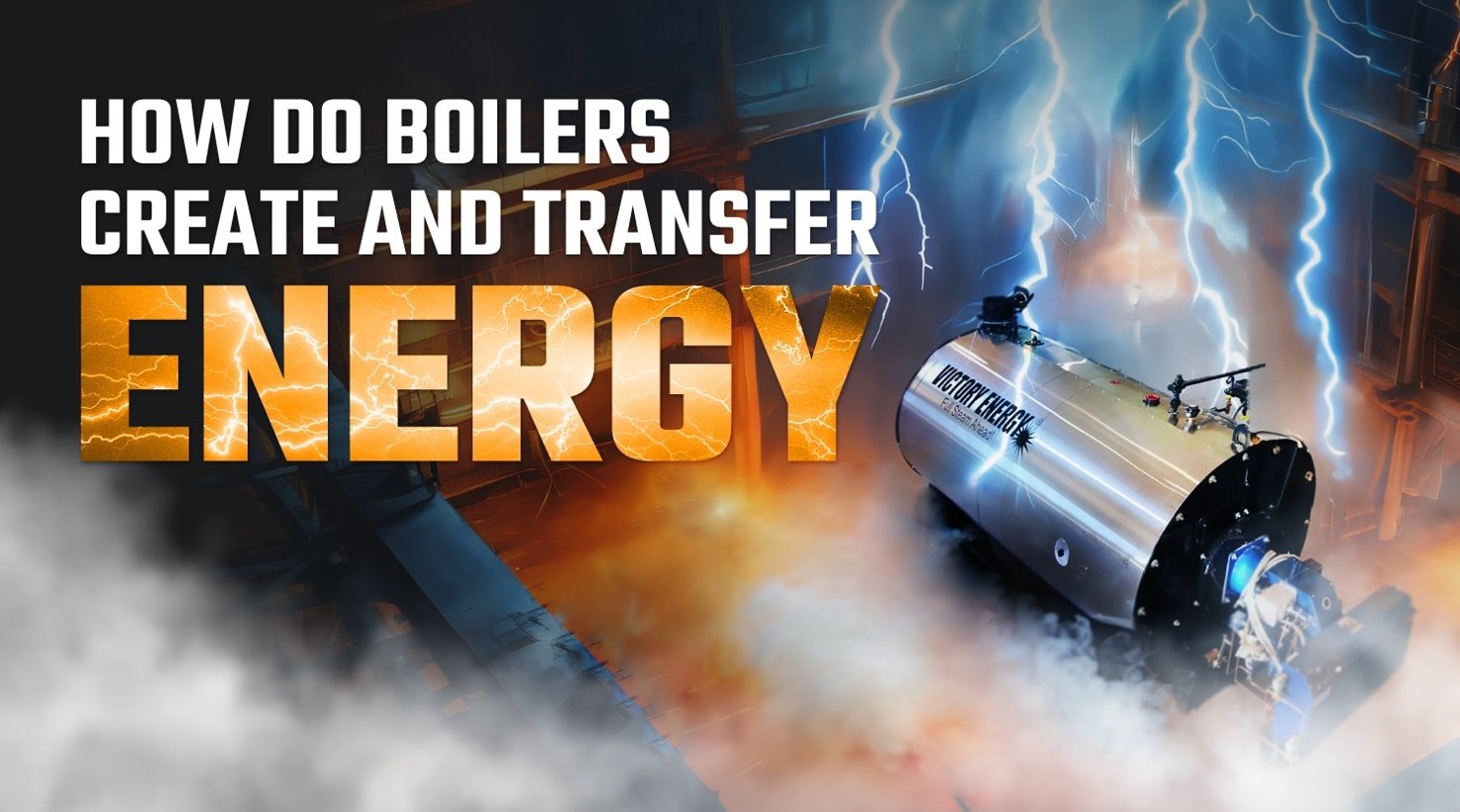On the surface, a boiler seems fairly straightforward. You heat up water until it turns to steam, then you route that steam where it needs to go to get things done. But have you ever stopped to think about what’s really happening as your boiler works? Or how it gets all the work done that you need it to do? When you understand what’s happening at the molecular level, and understand the relationship between temperature and pressure, it all starts to make sense.
ENERGY
At the molecular level, energy equals movement. The more a set quantity of molecules are made to move around, the more energy they will then contain. In other words, the more you heat up a given quantity of water, the more the molecules in the water will vibrate and bump into each other. Since water is dense, it’s good at retaining that energy, making it a great way to transfer that energy from one place to another. And at its core, that’s what a boiler does.
As natural gas or oil are burned, they convert matter into heat energy. That energy is then transferred to the water in the boiler’s vessel, where it eventually absorbs enough energy that all those water molecules really start flying around and bumping into each other. If enough heat is added, the forces that hold the water molecules together aren’t strong enough to keep them clumped together in a liquid state, and some of the molecules fly off into the air. That is what we know as steam.
That steam, which is full of a bunch of energy, can then be routed to wherever you need it to go to do work at an end process. When it gets there, it releases its energy and does the work. However, eventually, it will release so much energy that the molecules can’t keep flying around on their own, and they’ll start to clump together again. That’s where condensate comes from. As the steam loses the energy that’s keeping it in the vapor state, it condenses and becomes water again. So back into the loop it goes again, returning to the boiler vessel to be reheated, filled with energy, turned to steam, sent to the work process to release its energy, and then reclaimed again as condensate.
That’s one of the most beautiful and efficient things about steam; it never wears out. Water can be energized, turned into steam, de-energized, converted back into condensate, then energized again, over and over and over, as many times as you want. It never breaks down, it never stops following the laws of physics. Energy turns water to steam, steam releases energy and turns back to water. Repeat, rinse, repeat, and so on.
TEMPERATURE AND PRESSURE
As we all remember from grade school, water boils at 212 degrees Fahrenheit. But boilers can produce steam that’s way hotter than that. So, how do they do that? It has to do with the relationship between temperature and pressure, which is a very close relationship indeed. One of the first laws of thermodynamics, the ideal gas law, is what we’re talking about. That law says that with everything else being equal, temperature and pressure are proportionally related. Meaning, when one goes up, the other will, too.
Remember all those molecules that are bumping around against each other in the boiler’s vessel? Turns out, if you put them under pressure, they bump into each other even more. Think of the molecules as people trying to dance in an enclosed room. The more people you put in there, the more they’re going to bump into each other. If you keep the number of people the same, though, but start to move the walls closer to each other, you’re going to get more bumping, too.
Where this all leads is this: By putting the steam in a boiler vessel under pressure, you can add a lot more heat to it and create what’s known as superheated steam. This, then, allows you to move more energy per pound of steam because you’re packing it full of heat. Heat that it can then carry to another location and release as work. Which leads us to yet another beautiful thing about steam: In today’s world of high-tech, high-capacity batteries, superconductors, and other so-called scientific advancements, there are few things on earth that can carry energy more efficiently than good old steam.
If you’d like to take a deeper dive into how all this works, we encourage you to consider taking a few classes (online or in-person) at WARE’s Boiler University. Our instructors there are experts at the inner workings of steam and the machines that make and use it, and they have a lot of knowledge to pass along. However, if you’d just like to keep using steam without knowing its every detail, WARE can help you with that, as well. We have experts in every aspect of boiler operation and maintenance, as well as a fully stocked online parts department, Boiler Warehouse. No matter what you need, remember, we’re always here to help.
